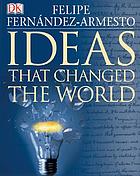25 September
envisioning the world
Let's start with a little test
Test Your Awareness: Do The Test note especially the statement at the end of the video, right before the look out for cyclists comment
You were asked to think about these issues
Westerners and Asians literally see different worlds. Like ancient Greek philosophers, modern Westerners see a world of objects - discrete and unconnected things. Like ancient Chinese philosophers, modern Asians are inclined to see a world of substances - continuous masses of matter.
How'd you do on the cyclist test?
The atomistic attitude of Westerners extends to their understanding of the nature of social institutions ... the social attitudes and values of continental Europe are intermediate between East Asian and Anglo-American ones ... The big-picture ideas are much rarer in Anglo-America than on the Continent.
Is this school, for example, an integrated whole or a series of interacting parts?
Have you ever heard of "works councils" or "co-determination"?
Can you accept these characteristics of "Western Utopias"?
there is a steady, more or less linear progress toward them
once obtained, they become a permanent state
they are reached through human effort rather than Fate or divine intervention
they are usually egalitarian
they are usually based on a few extreme assumbtions about human nature
Westerners attend primarily to the focal object or person and Asians attend more broadly to the field and to the relations between the object and the field. Westerners tend to assume that events are caused by the object and Asians are inclined to assigne greater importance to the context.
Did the author substantiate his points?
Lecture Notes
We can ponder this in terms of visual design principles.
an idea for the day


